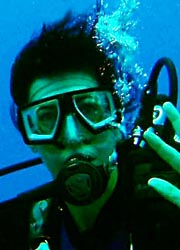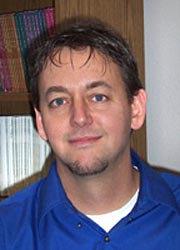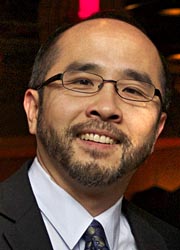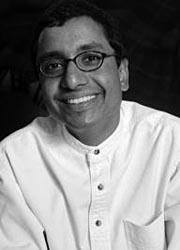Register
Click here to register on-line, and pay by credit card (deadline 5 pm, April 16th).
Click here to register by mail, and pay by check (deadline April 15th).
Spring 2013 SoCal-Nev Section Meeting
University of San Diego
Saturday, April 20, 2013
(Directions and Map)
Tentative Program
- 8::00-12:00 Registration
Outside the Warren Auditorium
in Mother Rosalie Hill Hall - 8:00-10:30 Refreshments
Outside the Warren Auditorium
in Mother Rosalie Hill Hall - 8:00 – 9:00 Graduate Student Resume Review
- Drop off your c.v. or resume and/or your teaching and research statements for same-day faculty review and feedback.
Organized by Ivona Grzegorczyk, Cal State Channel Islands - 8:30-2:30 MAA Book Sale
Outside the Warren Auditorium in Mother Rosalie Hill Hall
Organized by Richard Katz and Michael Hoffman, CSU, Los Angeles - 9:00-10:00 Invited Address by Chris Rasmussen, San Diego State University
Who Chooses Not to Persist in Calculus and Why?
Warren Auditorium in Mother Rosalie Hill Hall - 10:00-10:15 Section Business Meeting
Warren Auditorium in Mother Rosalie Hill Hall
Presentation of Section Distinguished Teaching Award
Recognition of 25- and 50-year members - 10:15-11:15 Student Poster Session
View the Call for Posters.
Outside the Warren Auditorium in Mother Rosalie Hill Hall
Organized by Ioana Mihaila, Cal Poly Pomona - 11:20-12:20 Invited Address by Kathryn Leonard, CSU Channel Islands
Image Modeling with Industry and Undergraduates
Warren Auditorium in Mother Rosalie Hill Hall - 12:30-1:30 Luncheon
Outside the Warren Auditorium in Mother Rosalie Hill Hall - 1:30-2:30 Invited Address by Ravi Vakil, Stanford University
The Mathematics of Doodling
Warren Auditorium in Mother Rosalie Hill Hall - 2:30-3:00 Refreshments
Outside the Warren Auditorium in Mother Rosalie Hill Hall - 3:00-4:00 Invited Address by Francis Su, Harvey Mudd College
Combinatorial Fixed Point Theorems
Warren Auditorium in Mother Rosalie Hill Hall
Directions and Maps
The meeting will take place in Mother Rosalie Hill Hall. Visit the University of San Diego's Visit Campus page for directions and maps of campus.
Hotel
For attendees who wish to arrive the day before or leave the day after the meeting, the following three hotels are close to the USD campus.
Hacienda Hotel, Old Town (ask for USD rate $129)
4041 Harney St.
(619) 298-4707 or (800) 888-1991
http://www.haciendahotel-oldtown.com/
Courtyard San Diego Old Town
(ask for USD rate: $177.66; weekend regular rate is only $139/night)
2435 Jefferson Street
(619) 260-8500 or (800) 255-3544
http://www.marriott.com/hotels/hotel-information/travel/sanot-courtyard-san-diego-old-town/
Old Town Inn (ask for USD rate $79; includes buffet breakfast, free parking, free wireless)
4444 Pacific Hwy.
(619) 260-8024
http://www.oldtown-inn.com/
Register
Click here to register on-line, and pay by credit card (deadline 5 pm, April 16th).
Click here to register by mail, and pay by check (deadline April 15th).
Registration Fees
| Registration | |
| Nonmember | $45 |
| MAA Member | $40 |
| Student | $15 |
| Box Lunch Sandwich selection: |
|
| Nonmember | add $10 |
| MAA Member | add $10 |
| Student | add $8 |
On-site registration will be available for the meeting, but will be $5 more than the pre-registration charge.
Register on-line
Click here to register on-line, and pay by credit card (deadline 5 pm, April 16th).
Register by mail
Click here to register by mail, and pay by check (deadline April 15th).
Kathryn LeonardCSU Channel Islands |
Kathryn Leonard received her PhD in Mathematics from Brown University, then joined the faculty of California State University, Channel Islands (CI), after postdoctoral work at California Institute of Technology and Mathematical Sciences Research Institute. Her awards include an NSF CAREER award and an MAA Henry L. Alder Award for Distinguished Teaching. She is a co-director of the NSF-funded Center for Undergraduate Research in Mathematics hosted by BYU, and is also the director of her campus' Center for Integrative Studies. |
Image Modeling with Industry and Undergraduates
This talk explores various tiers of research in geometric modeling of shapes, connecting "high-level" research with projects involving students and industrial/government partners. Shape modeling arises from object recognition problems in the field of computer vision. We explore a particular category of shape models, skeletal models, that represent an object as a collection of connected branches of curves and associated scalar function or functions. We also present a collection of applications where skeletal models have proved useful.
Chris RasmussenSan Diego State U
|
Chris Rasmussen received his B.A., M.A. and Ph.D. from the University of Maryland in Mechanical Engineering, Mathematics, and Mathematics Education, respectively. He is currently Professor of Mathematics Education at San Diego State University in the Department of Mathematics and Statistics. His research focuses on the teaching and learning of undergraduate mathematics, with an emphasis on courses that typically function as a transition to advanced mathematics. He is a past Coordinator for the Special Interest Group of the Mathematical Association of America on Research in Undergraduate Mathematics Education, co-Editor for MAA Notes, Making the connection: Research and teaching in undergraduate mathematics education, and is currently co-PI on a 5-year NSF-funded project to study characteristics of successful programs in college calculus. |
Who Chooses Not to Persist in Calculus and Why?
The transition from high school to college mathematics is one of the most critical junctures in the preparation of individuals to meet the mathematical demands of the 21st century in science, technology, engineering, and mathematics (STEM). Even while more students are taking more advanced mathematics in high school than ever before—including over half a million each year who study calculus while in high school—the percentage of all college students in 4-year undergraduate programs who are enrolled in mathematics at the level of calculus or above has decreased steadily over the past decades. Moreover, a substantial percentage of students who enroll in Calculus I intending to take more Calculus end of deciding not to continue in Calculus. This represents a huge loss to the nation in terms of the need for more students to pursue a major in one of the STEM disciplines. In this presentation I examine the characteristics of STEM intending students who begin their post-secondary studies with Calculus I and either persist or switch out of the Calculus sequence, and hence either remain or leave the STEM pipeline. The data used for this analysis comes from a unique, in depth national survey aimed at identifying characteristics of successful programs in college Calculus.
Francis SuHarvey Mudd College |
Francis Su is the Benediktsson-Karwa Professor of Mathematics at Harvey Mudd College in Claremont, California. His research is in geometric combinatorics and applications to the social sciences, and he has co-authored over 25 papers, half of them with undergraduates. From the MAA, he has received recognition for his writing and teaching, including the Hasse Prize in 2001, the Alder Award in 2004, and the Haimo Award in 2013. He recently concluded a term as MAA vice-president. His passion for teaching and popularizing mathematics is evident from his website "Math Fun Facts", which receives over a million hits each year, as well as his iPhone app by the same name. His hobbies include songwriting, gardening, photography, and theology; just like mathematics, these are modes of creative expression that divinely blend structure and freedom, truth and beauty, reflection and action. |
Combinatorial Fixed Point Theorems
The Brouwer fixed point theorem and the Borsuk-Ulam theorem are beautiful and well-known theorems of topology. It is perhaps less well-known that the Borsuk-Ulam theorem implies the Brouwer fixed point theorem. These theorems both admit combinatorial analogues. In particular, Sperner's lemma is equivalent to the Brouwer fixed point theorem, and Tucker's lemma is equivalent of the Borsuk-Ulam theorem. With these theorems, I will trace recent connections, applications, and generalizations --- some of which includes research with undergraduates.
Ravi VakilStanford University |
Ravi Vakil is a Professor of Mathematics at Stanford, where he is also the Robert K. Packard University Fellow and the David Huntington Faculty Scholar. He is an algebraic geometer, and his work touches on many other parts of mathematics, including topology, string theory, applied mathematics, combinatorics, number theory, and more. He was born in Toronto, Canada, and studied at the University of Toronto, where he was a four-time winner of the Putnam competition (``Putnam Fellow''). He received his Ph.D. from Harvard in 1997, and taught at Princeton and MIT before moving to Stanford in 2001. He has received the Dean's Award for Distinguished Teaching, the American Mathematical Society Centennial Fellowship, the Frederick E. Terman fellowship, an Alfred P. Sloan Research Fellowship, the NSF CAREER grant, and the Presidential Early Career Award for Scientists and Engineers. He has also received the Coxeter-James Prize from the Canadian Mathematical Society, and André-Aisenstadt Prize from the CRM in Montreal. He was the 2009 Earle Raymond Hedrick Lecturer at MathFest, and is the Mathematical Association of America's Pólya Lecturer 2012-2014. He has served as an informal advisor to the new website mathoverflow. He works extensively with talented younger mathematicians at all levels, from high school (through math circles, camps, and olympiads), through recent Ph.D.'s. |
The Mathematics of Doodling
Doodling has many mathematical aspects: patterns, shapes, numbers, and more. Not surprisingly, there is often some sophisticated and fun mathematics buried inside common doodles. I'll begin by doodling, and see where it takes us. It looks like play, but it reflects what mathematics is really about: finding patterns in nature, explaining them, and extending them. By the end, we'll have seen some important notions in geometry, topology, physics, and elsewhere; some fundamental ideas guiding the development of mathematics over the course of the last century; and ongoing work continuing today.Student Poster Session
Both undergraduate and graduate students are invited to present a poster at the Spring Section Meeting of the MAA.
Here are some ideas of what students can present:
- Results of masters thesis, honors, senior, or independent study projects
- Results of classroom projects or modeling contests
- Results of REUs or other summer research programs
- Historical investigations in pure or applied mathematics
- Solutions of problems from the Putnam Exam or from the Monthly or other journals
CV, Research and Teaching Statement
Review for Graduate Students
Are you a graduate student or postdoc applying for faculty positions or other jobs this year?
Bring hard copies of your CV, Research Statement and/or Teaching Statement to the Fall Section meeting for review by a group of local mathematicians. They will help you look for ways to improve your application, so it is more competitive on the job market. To participate, please leave your materials at the registration table before 9:30 am, and they will be reviewed and ready for pick up around 2:30pm. You may bring academic and industrial CVs, which highlight different relevant achievements. The reviewers will return an evaluation rubric and feedback on the content and the presentation of your materials.
We wish you good luck in your job hunt!
